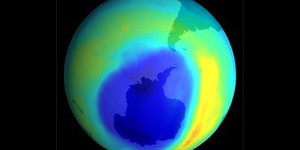Others Like “Latitude and Weather” (top 20 results)
|
As you move up or down in altitude or elevation, the temperature and pressure will change. This is particularly striking if you live near a mountain range. During the summer, at low altitudes you may have temperatures in the 80's or 90's and still be able to see snow on mountain peaks at high altitude. You can test the effect of altitude by comparing temperature data from weather stations at high and low altitudes. You can test the effect of elevation by making your own weather balloon and…
Read more
Many continents contain large mountain ranges that divide the continent into different regions. In the U.S. the Rocky Mountains mark the continental divide. The presence of a large mountain range can have a big effect on seasonal weather patterns. Also, the weather and climate on one side of a mountain range may be very different from weather and climate on the other side of the range. In the case of the Rocky Mountains, the western slope and eastern slope each have very different climates…
Read more
How does temperature change as barometric pressure changes? You can make a device to test this using a barometer and a thermometer on your stovetop. You can collect your own weather data from a barometer and thermometer over a period of a week or month. You can also use data from a weather station to plot the relationship between barometric pressure and temperature. Does the pressure change as humidity changes? Measure the pressure in a humid and non-humid environment (like your bathroom…
Read more
If you live in a humid environment, then you know that summer is not only hot, it is downright muggy. You can test the effect of humidity on temperature by measuring the temperature and humidity in your bathroom while running the shower. You can also use historical weather data to compare average seasonal temperatures in humid (e.g., Florida) and dry (e.g., Arizona) regions. How does humidity relate to temperature? Pressure? Why do humid environments tend to be coastal or tropical? How does…
Read more
Wind can make a cold day colder, or a hot day more pleasant. Use weather data to test the effect of wind on the temperature. How much of a change on the perceived temperature can the wind make? How is wind shear calculated? How can a wind barrier, like a wind breaker, keep you warm even if there is no insulating material? Build an instrument to measure wind speed or direction. (FI, 2006; GLOBE, 2006; NCAR, 2006; NOAA, 2006; Unisys, 2006; Weather Underground, 2006; WMO, 2006)
Read more
Ocean currents have a huge impact on our weather. If not for the ocean currents, the global climate would be similar to an ice age. Do you live near the coast? Find out which currents are near your coastline. How do they affect your climate? Where do they come from? Do they bring colder or warmer water to your area? Are they seasonal? What do you think your area would be like without them? Every three to seven years there is a weather phenomenon called El Niño, which is caused by…
Read more
What are cold fronts and warm fronts? What happens when a cold front meets a warm front? You can test this using different temperatures of water. Use food coloring to label the cold and hot water, then carefully combine the two liquids together. What happens? How do they mix? You can also fill water balloons with hot or cold water, and then float in a hot or cold water bath. How does temperature affect the movements of the balloon? You can do similar experiments with hot and cold air in…
Read more
Floods can be very destructive, capable of leveling whole towns and decimating crops and fields. Typically in regions prone to flooding there are cycles of flooding that occur, usually in areas where a wet season comes after a period of drought. You can use precipitation data to test if incidents of flooding have been preceded by periods of drought. Look for long periods of dryness in the precipitation data to indicate a drought. You can also conduct an experiment on dry or moist soil to see…
Read more
The ozone layer is important for blocking most of the harmful radiation that comes from the sun. You can find maps of the ozone layer and compare different regions of the globe for ozone coverage. Where are the problem areas? Is there a difference in ozone coverage between different hemispheres? Between populated and un-populated areas? In atmospheric regions over land masses or over bodies of water? Some scientists think that aerosols in the air are breaking down the ozone layer. You can do…
Read more
Unless you live in the Southern states, you only hear about the most destructive hurricanes. In fact hurricanes occur every year, even multiple times a year. Each hurricane is a tropical storm related to cyclones and tornadoes, some big and some small. Each hurricane is measured based upon several variables like: wind speed, diameter, direction of movement and speed of movement. Does the size of the hurricane correlate with the wind speed? What information can the eye of the hurricane…
Read more
|
Explore Our Science Videos
Make a Water Strider - STEM Activity
How to Make an Archimedes Screw - STEM Activity
Why Soda Fizzes – Boyle’s Law Demonstration






